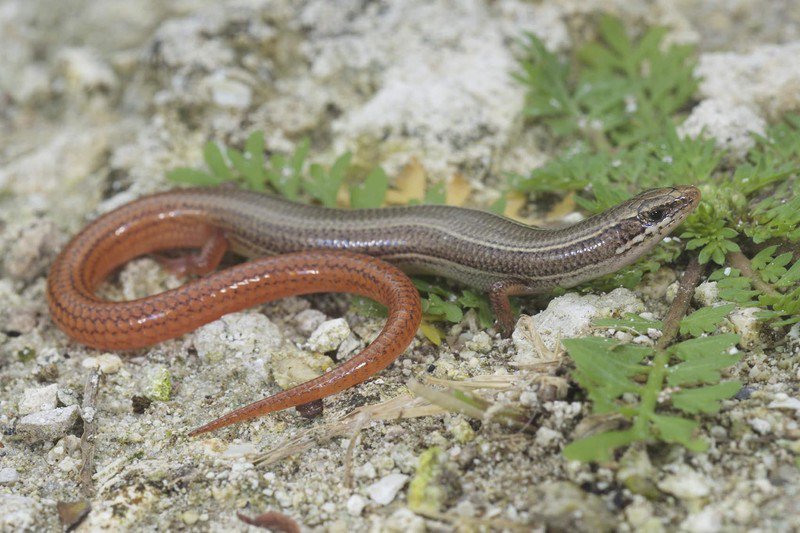The Florida Keys mole skink lives on a small geographic location in the Florida Keys.
The Trump Administration has not adequately taken measures to protect the Florida Keys mole skink (Plestiodon e. gregius), the Center for Biological Diversity said in a press release announcing a lawsuit against Interior Secretary David Bernhardt and the U.S. Fish and Wildlife Service.

Center for Biological Diversity
The population of the Florida Keys mole skink has declined by 30 percent, the center says, and is now considered rare.
The Center says that climate change and rising seas will permanently flood half of the lizard's habitat on the Florida Keys by the year 2060. And its projections say by the end of the century, three-quarter's of the lizards habitat will be under water.The Center also says that urban sprawl is taking its toll on the reptiles, exposing them to the threats of pollution, traffic and feral animals, such as cats.
“The Trump administration’s dangerous denial of the climate crisis will drive the Florida Keys mole skink to extinction,” Elise Bennett, an attorney for the Center for Biological Diversity said in a statement released September 23. “Sea-level rise driven by climate change is steadily consuming the Florida shores we love. Without federal leadership to address climate change, this lizard will be left without a place to exist.”
Florida Keys Mole Skink Denied Endangered Species Act Protection
The skink, because it only lives in a small geographic location could soon have no place to live. And a single big storm could wipe out the entire population of the reptile, the Center says.
“The denial of protection to the Florida Keys mole skink isn’t based on science but on a political agenda that favors corporate profits over the wellbeing of wildlife and people,” said Bennett. “The Trump administration’s head-in-the-sand approach to the climate crisis is driving these beautiful lizards and thousands of other species to extinction.”
The Florida Keys mole skink is a small lizard with brownish coloration with a red to brown tail with slight black stripes. Its scales are smooth and shiny. Its legs are small and fully developed and it can grow to around 5 inches in length, including the tail. It can be found along the shoreline of the Dry Tortugas and and the Lower Keys. Its population has declined by 30 percent, the center says, and is now considered rare.


